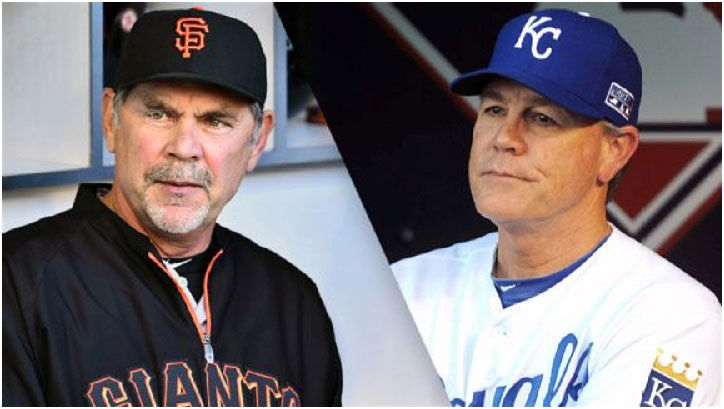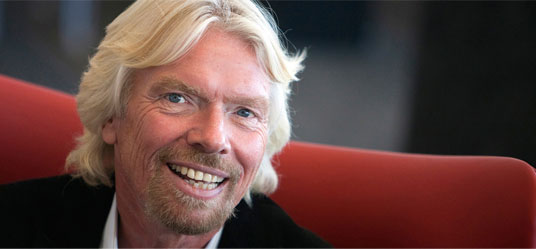Why the best team players beat all-stars.
Imagine you’ve been handed your dream opportunity at Google, including a big budget to attract superstars in every field to staff your project. You’ve handpicked an A-Team of proven performers who ultimately were seduced by Google’s great brand, an incredible mission and a top tier comp package. You’re assured about the success of your team, right?
In a groundbreaking two-year study, Google discovered that no matter how many superstars they hired, some sales teams outperformed their revenue targets by 19%, while other all-star Googlers underperformed by as much as 19%, a whopping 38% delta between the lowest and highest scorers.
What was the difference? Google realized that who was on the team mattered less than how the team worked together. Rather than focus on one person’s career success, the winning teams obsessed more over assembling players who wanted to make history together. We’ve all heard inspiring stories about how scrappy underdog athletes with a passion for interdependence have beaten self-absorbed all-star teams during championships. But could that also be true for iconic companies like Google, with arguably one the most rigorous screening processes in the world? Prasad Setty, VP People Analytics, studied 180 Google teams across the world using over 35 statistical models and 200 interviews. Setty presented his findings at a conference I hosted in San Francisco, the 2016 Goal Summit created by BetterWorks, a world-leading goal science software company.
Among the myths toppled by the Google study was the overused metaphor about how team play in professional sports provides the ultimate leadership lessons for management teams. The overall sports comparison breaks down quickly in businesses where the reality of global operations force executive teammates to play together largely without even seeing each other most of the time. The worldwide sales and engineering teams at Google that were studied by Setty’s team, for example, were typical of multinational companies where the people are distributed broadly, flung across time zones and then surgically inserted into varying functions and cultures, often with uniquely different rules and tasks where they’re rarely in the same room together. Even in companies where employees see each other often, it’s common for individual executives to serve on a myriad of teams in many different roles where they don’t even work for the same manager or the division that owns the outcomes.
Under these dynamic circumstances, Google found that the rock star status of the individuals selected for the team played a smaller role in organizational success than the willingness of each member to commit serious effort to work together to achieve big hairy audacious goals as a team. So what could possibly drive the kind of commitment that produces a 38% delta on Google’s sales teams? Setty’s research found three critical differences that ignited top performers:
- Impact vs. Meaning. If you want to spark engagement for your team projects, the key is to make it obvious how the goal really matters in terms of external impact. Google’s study reaffirmed vast research about how outside validation of a goal rallies teams into a level of performance where they’re willing to do extraordinary things to “see their place in history,” Setty observed. But many leaders fail to seize that opportunity. Most make the naive assumption that the impact is clear and don’t give enough priority to communicating why a particular goal or project could be a game changer for the company. Some managers can’t come up with an inspiring reason. “When you don’t explain why an initiative has impact, the team sees right through it and assumes it’s just a pet project that benefits the boss’ career,” Setty says. That too often results in suboptimal performance from even the best people.
Why Meaning Matters: As an individual, it’s one thing to know you’re a part of a high-impact project, it’s another to feel that the task you’re doing is something you personally love to do. The need for this internal validation, in addition to the external impact, means that the leader must not only be clear about the outcome, but also understand the motivations of each team member. Setty offered the example of an engineer who had contributed successfully to a project related to Google search. She knew it was an important project for Google, but after many years of high engagement, she was no longer finding that endeavor exciting from a personal standpoint. “She needed to find a new role on the team,” Setty advised, “or she needed to find a new team on a project that feeds her personal motivation. For a great team, you need to balance both the internal and external validation.”
Takeaway for the Leader: Just because it’s clear to you that a project is essential, don’t assume that it is obvious why it should be valued by the individuals who make it happen in terms of external impact and internal meaning.
2. Clarity vs. Dependability. Many managers spend time establishing clarity around roles, authority and structure, particularly at the beginning of a project when it really counts. “But if you keep layering on structure, the team eventually becomes very brittle,” he warned. “People will do just what’s assigned; no more, no less, and innovation and enthusiasm decline. The team will not be well positioned for inevitable change, and it might buckle under pressure.”
The question for the leader is, “Does this structure provide clarity for the team?” Setty asked. “On the other hand, dependability refers to how the team members rely on each other to deliver quality work.” When a team can count on a high level of interdependence, then it needs less guidance from the boss. In fact, if a leader continues to pile on more structure, it will eventually backfire and can build resentment by the team. Too much input from the leader can steal the team’s feeling of ownership. After launching them with clarity at the beginning, the more autonomy you can afford to give your people, the more likely they will get things done well with high energy because it has more meaning to them.
Takeaway for the Leader: “What do you want to pivot on as a leader of your team?” Setty asked. “Do they need more structure, or do you want to shift to a culture of greater inter-dependability?”
3. Psychological Safety. Think about how it feels when you are on a team where everyone trusts each other–where you could share bad news and speak freely and creatively without embarrassment or retribution. Bosses routinely ask for input, and then unwittingly punish their team members for doing so. It’s easy to shoot the messenger without considering the greater implications. “Keeping quiet may be great for self-preservation,” Setty acknowledged, “but you’re expending energy solving the wrong problem from the organization’s perspective, and it’s a huge distraction from the main goal.” When you’re playing defense, you’re sacrificing opportunities to learn to serve customers better or outmaneuver competitors. Google’s sales teams that self-reported low ratings in psychological safety in Setty’s survey underperformed their revenue goals by 19%, and those with high ratings exceeded their revenue targets by the same margin.
How do you give your team psychological safety? Astro Teller, who runs X, the Alphabet lab tasked with “moonshot” projects at Google, needed a strategy to reassure all-star executives that it was okay to embrace nearly impossible odds. When he recruited a top team to engage in one of the company’s highest risk projects, Google Wing, its drone delivery experiment, he took a non-intuitive approach. Teller’s role is unique at Google because it’s already well known that most of the projects he’s given are experiments that will fail by definition. For Google Wing, Teller demanded that the team imagine it was the biggest failure in Google history. “Usually you never think like that when teams are assembled,” Setty mused. “It’s unusual to think in terms of how everything could break.” The strategy had three critical benefits: It increased the quality of the product, reduced errors and boosted morale because the group fleshed out all the fears and actually took action to address those concerns in advance.
But the most powerful result was the team bonding early in the process at a point where it could have torn itself apart. Rather than engage in political infighting or endless debates pitting egos against each other, they instead embraced a wide range of painful issues as a team rather than waiting for them to become problems. That builds respect and trust on the team.
“If the project had gone sideways, it’s unlikely it would have been due to the doomsday predictions because they’d thought about it openly and had each other’s back,” Setty said. They were more willing to admit mistakes and more open to new approaches to problem solving. “This is psychological safety at scale,” Setty observed. When you make it safe for a high-powered group to face the brutal truth early in a learning process–as a means to win a place in history together rather than individual fame–that’s a game-changer for the team and your business.
You’ll find a complete recording of Prasad Setty’s Google presentation at the 2016 BetterWorks Summit on YouTube: http://tinyurl.com/hwkdczj
The opinions expressed here by Inc.com columnists are their own, not those of Inc.com.










